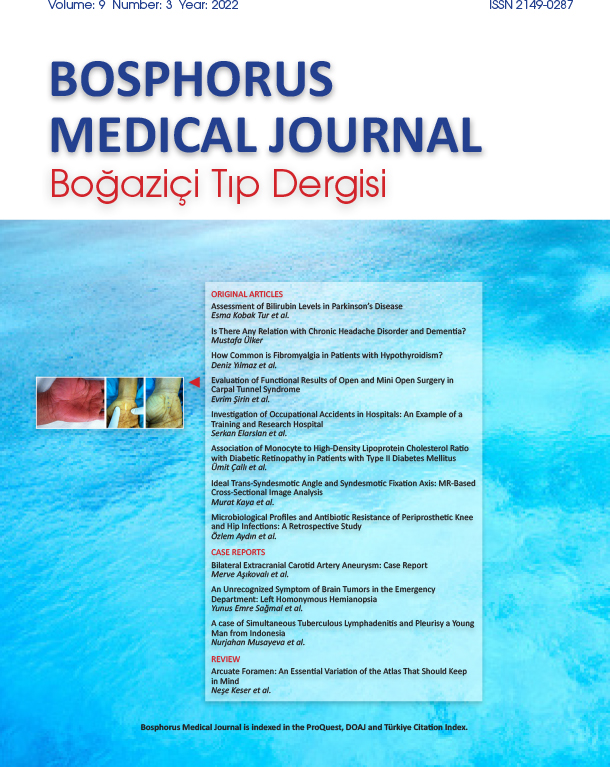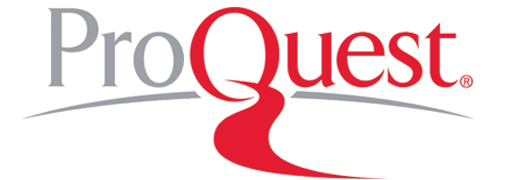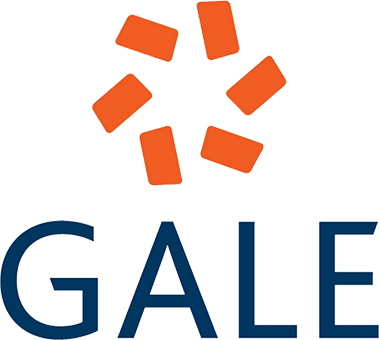Volume: 1 Issue: 3 - 2014
| 1. | BMJ 2014-3 Full Issue Page Abstract | |
| EDITORIAL | |
| 2. | Robin Williams: Bir Özkıyımın Ardından Aynil Yenel Pages 88 - 89 Abstract | |
| ORIGINAL RESEARCH | |
| 3. | Beta-2 Mi̇croglobuli̇n as A Prognostic Factor in Chronic Hepatitis B Treatment Seda Sibel Günbay, Özcan Deveci, Canan Ağalar, Tuna Demirdal, Neşe Demirtürk, Sedat Kaygusuz, Dilek Kılıç Pages 90 - 94 INTRODUCTION: The β-2 MG (Beta-2 microglobulin) levels in patients with chronic hepatitis B are observed to be significantly higher compared to the inactive carriers. In chronic hepatitis B infections treated with interferon, the β-2 MG levels have been observed to be higher during exacerbations. The aim of this study is to investigate the relationship between the β-2 MG levels before and after treatment in patients who are treated with interferon. METHODS: The present study was conducted at the Kirikkale University Medical School, Department of Infectious Diseases and Clinical Microbiology. The study subjects were divided into two groups: Group 1 consisted of 22 patients who were both pre-treated for hepatitis B or were treatment- naive. They were also HBsAg (+) and HBV DNA (+). Their Knodell score was 4 or above in the liver biopsy and the liver enzymes were at least twice as high as the normal values. Group 2 was the control group and consisted of 22 inactive carriers who were HBsAg (+) and HBV DNA (-) with normal liver enzymes. The patients β-2 MG levels (AIDA autoimmune diagnostic assays, Ref 10801) were analysed with the microELISA method using the serums that were stored at -70oC. The β-2 MG tests of the patients in Group 1 were essayed both before the treatment and 2 months into the treatment. RESULTS: The ages of the patients in the case of group varied between 17 and 59 (mean age: 38), while the age of the control group were between 21 and 57 (mean age: 44). No statistically significant difference has been observed in terms of the age and sex of the treatment and the control groups (p=0.177, p=0.181, respectively). There was a statistically significant difference between the starting β-2 MG values of case of group and the starting β-2 MG values of control group (p=0.0001). The β-2 MG levels in Group 1 were observed to be significantly lower in the 2nd month of the treatment. DISCUSSION AND CONCLUSION: The β-2 MG values have been thought to be auxiliary parameters both in the follow up of the treatment success and to make the decision to initiate the treatment. More comprehensive studies are required to clarify this issue. |
| 4. | Multiple Myeloma; As an Increasingly Suspected Factor in the Etiology of Acute Kidney Injury M. Kahraman, F. Türkmen, S. Kiremitçi, A. Bayrak, O. Akyüz, N. İlhan, Ö. Sadioğlu Çağdaş, D. Şenel Yıldız, S. Baş, G. Gümrükçü Pages 95 - 101 INTRODUCTION: Multiple Myeloma (MM) is a malignant disease characterized by malignant proliferation of plasma cells and by increase in the levels of monoclonal immunoglobulin or its fragments in blood. Early symptoms of this disease are generally bone pain particularly in the back or thorax, anemia-related fatigue, and recurrent infections. Patients with other complications such as renal failure, nephrotic syndrome, bone fracture, radiculopathy, bleeding, or hypercalcemia may refer to medical doctors in different disciplines. When multiple myeloma is not suspected at first, diagnosis can be delayed. In this study, we examined 20 MM cases first diagnosed in our clinic. METHODS: The prospective study has been planned to include the patients who referred to our clinic between the dates of May 2012 and November 2013 and were diagnosed with MM for the first time according to the diagnosis criteria of International Myeloma Working Group (IMWG- 2007). Routine biochemical and bacteriological tests as well as protein electrophoresis (PE), serum immunoelectrophoresis (SIEP), and urine immunoelectrophoresis (UIEP) (for those with proteinuria > 0.5 gr/day) were performed and immunoglobulin levels were measured. Interlab G26 microgel is used for PE, SIEP and UIEP; and immunoturbidimetric method and Architect system are used for immunoglobulins. Following fixation and decalcification, bone marrow biopsy samples (tru-cut) were analyzed by histochemical staining. After the routine follow-up procedure; Hematoxylin eosin, PAS, Masson trichrome were used in histochemical analysis of renal biopsy samples and immunohistochemical analysis was carried out for Kappa and Lambda. Immunofluorescence analysis was performed for IgG, IgM, IgA, C1q, c3, Fibrinojen, Kappa and Lambda. RESULTS: Out of 1824 cases who were admitted to our clinic and treated therein between the dates of May 2012 and November 2013, 861 patients (47.2%) were diagnosed with acute kidney injury (AKI) and 20 in-patients (1.09%) were diagnosed with MM. Anemia, AKI, hypercalcemia, weight loss, bone pain and/or bone fracture, and acute kidney injury caused by nonsteroidal anti-inflammatory drugs were detected respectively in 19 (95%), 18 (90%), 15 (75%), 14 (70%), 14 (70%), and 11(55%) patients out of 20 MM patients during their admission to the clinic. Among the cases referred to our clinic, 2 cases had gastrointestinal bleeding. 18 of 20 MM patients had acute kidney injury during their admission and 2 of them developed AKI in the hospital. All the cases showed an M band in serum and their SIEP and UIEP results were positive. The rate of atypical plasma cell was found to be 10% in bone marrow biopsy. Moreover, cast nephropathy was found in three cases after renal biopsy. DISCUSSION AND CONCLUSION: In conclusion, MM is a very important factor that must be taken into consideration in the etiology of AKI. Even though the history of a patient with AKI shows nonsteroidal anti-inflammatory drug use, the possibility of MM must be given due consideration. |
| 5. | Comparison of Dexmedetomidine, Midazolam-Remifentanil, and Propofol-Remifentanil in Sedation for Colonoscopy Bekir Kaplan, Mustafa Ekim, Güldem Turan, Dilek Subaşı, Gülşen Bosna, Osman Ekinci Pages 102 - 107 INTRODUCTION: The ideal sedative agent for colonoscopic interventions should provide rapid onset and short duration of action during the procedure and faster recovery with minimal side effects. The combination of benzodiazepines or propofol with opioids is usually preferred for the purpose of sedation. Dexmedetomidine, a selective α-2 receptor agonist, provides cooperative sedation and analgesia without respiratory depression. In the present study, our aim was to evaluate the hemodynamic effects of dexmedetomidine, midazolam-remifentanil or propofol-remifentanil-based sedation in elective colonoscopic procedures and to compare recovery times, and patient and physician satisfaction. METHODS: The study included total of 75 ASA I-II patients between 18-65 years of age who underwent elective colonoscopy under sedation/ analgesia. The patients were randomly assigned to three simple groups. Group I(n=25): A loading dose of 1mcg/kg dexmedetomidine was injected over a 10-minute period followed by a 0.5mcg/kg/ hour dexmedetomidine infusion. Group II(n=25): A loading dose of 1mcg/kg remifentanil was injected over a 2-minute period followed by a 0.1 mcg/kg/ min remifentanil infusion. 2 mg IV midazolam was administered two minutes after the initiation of remifentanil infusion. 1 mg IV midazolam administration was continued until sufficient sedoanalegsia was achieved (Ramsay Sedation Score: 3). GroupIII (n=25): A loading dose of 1mcg/kg remifentanil was injected over a 2-minute period followed by a 0.1mcg/kg/min remifentanil infusion. 75 mcg/kg/ min propofol infusion was initiated together with remifentanil infusion. RESULTS: Heart rate (HR) was found to be elevated at perioperative 15 min, mean arterial pressure (MAP) was found to be elevated at perioperative 20 min, and both parameters were found to be significantly more elevated in measurements at 0 min, 10 min, 20 min, and 30 min during recovery in Group II compared to Group I (p<0.05). SpO2 values were found to be significantly higher in Group I compared to the mean values in Group II and Group III (p<0.05). The duration of recovery from anesthesia was significantly longer in Group I when compared to the mean recovery periods in Group II and Group II (p<0.05). DISCUSSION AND CONCLUSION: According to the study results, there was no difference between the groups in terms of patient and gastroenterologist/surgeon satisfaction. We consider that dexmedetomidine appears to be an appropriate alternative in procedures that require analgesia and sedation, such as in colonoscopy, due to the fact that it provides hemodynamic stability and avoids respiratory depression, although a loading time lasting for 5-10 minutes and prolonged recovery period after the procedure may be counted as disadvantages. |
| 6. | Evaluation of The Patients Who Admitted to Emergency Room by Ambulance Rasim Yorulmaz, Tuba Cimilli Öztürk, Ebru Akoğlu, Gökhan İşat, Kemal Aygün, Hasan Demir, Onur Yeşil, Özge Onur Özberk Pages 108 - 113 INTRODUCTION: The presentation of emergency medical system and utilization ratio of ambulance services in developed and developing countries are changing according to local, socioeconomical and cultural conditions of them. In this study we aim to evaluate the patients who use emergency medical systems in a research and training hospital in Istanbul. METHODS: In our prospective study, the adult and pediatric trauma patients who were admitted to a tertiary research and training hospital by ambulance evaulated for their demographics, reasons for calling an ambulance, field emergency triage category and its correlation with the emergency service triage categories. For the statistical analysis NCSS (Number Cruncher Statistical System) 2007&PASS (Power Analysis and Sample Size) 2008 Statistical Software (Utah, USA) program was used. RESULTS: Total 186 patients data were analyzed. 48,9% (n=91) were female, 51,1% (n=95) were male. Their mean age was 54,71±24,34 years. The distance from reception of the patient to the hospital were approximately 5.69+3.43 km. The time between the accession to the case from the first call was 9.52 + 5.58 minutes. Only for 35.5% of the patients, it was reported the the reason for calling the emergency medical system (EMS) for ambulance was the patients critical condition. The rates of admitting to a service of the hospital according to the triage category of EMSs were statistically significant. The correlation of triage category of EMSs and emergency triage nurse was statistically significant. DISCUSSION AND CONCLUSION: The 16% patients of EMSs of Istanbul are green triage code (non-urgent) patients. The 60% of the reasons for calling ambulance are other reasons except the critical position of their patients. EMS personel are giving compatible triage codes with the emergency triage nurses. It is possible not to carry green triage code (non-urgent) patients by ambulance. To canalize these patients to another vehicle may reduce the unnecessary ambulance usage rates. |
| 7. | Invazive Device Associated Hospital Infections in Critical Care Unit of Fati̇h Sultan Mehmet Training and Research Hospital; Four Years Experience Özlem Alıcı, Canan Ağalar, Servet Öztürk, Nur Akgün Pages 114 - 118 INTRODUCTION: To determine invasive device associated infections rates and causative microorganisms in four years in intensive care unit of our hospital and to compare with Turkish and international datas are aimed in this study. METHODS: The numbers of total patient days, ventilator days, central catheter days and, urinary catheter days in the intensive care unit were recorded and invasive device associated infection rates were calculated among 01.01.2010 and 31.12.2013. The conventional methods and API 20E (bioMérieux,France) were used for identification of pathogens. RESULTS: Totally 443 invasive device associated infection episodes were determined during four years. Ventilator associated pneumonia rate was 19.25/1000 ventilator days and most common microorganism was Acinetobacter spp. Catheter associated urinary infection rate was 3.64/1000 urinary catheter days and the most common pathogen was Escherichia coli. Central catheter associated blood stream infection rate was 2.49/1000 central catheter days and the most common infecting organism was coagulase negative staphylococcus. DISCUSSION AND CONCLUSION: As other hospitals of country, our invasive device associated infection rates were found to be higher than those in developed nations. To implement effective infection control programs including surveillance and education should become a priority in our country. |
| CASE REPORT | |
| 8. | Failure of Ultrasound to Diagnose Pseudoascite: A Case Report Enver Berber, Meltem Sertbaş, Yaşar Sertbaş, Serkan Elarslan, Mehmet Timuçin Aydın, Ali Özdemir Pages 119 - 121 Accumulation of fluid in abdominal cavity is named as ascites. In some cases, although it may be thought that there was an ascites accroding to the physical examination signs, there may not be free fluid within the peritoneal cavity. These conditions are named as pseudoascites. Ultrasound is the gold standart imaging method. In our case we mentioned 55 years old women, to whom parasynthesis was done due to diagnosis of ascites according to the physical examination and ultrasound imaging. Parasynthesis fluid examination of serum ascites albumin gradient (SAAG) was ≥1,1. Since further examinations were not compatible with the conditions that cause SAAG ≥ 1,1, abdominal tomography which showed a large cystic mass was done. After surgery it was seen that the mass was a musinous ctystic adenoma. As a result, clinicians must consider possibilities other than ascites in the differential diagnosis of large abdominal fluid accumulation. |
| REVIEW | |
| 9. | Bariatric Surgery Hasan Altun, Aziz Bora Karip, Hamit Kafkas Çelik Pages 122 - 126 Obesity rate is growing worldwide and is becoming one of leading public health problem. It is associated with an increased risk of diabetes, hypertension, dyslipidemia and some types of cancer. Besides this increase in rate of obesity, there is insufficient progress in its medical therapy. Bariatric surgery is currently the most efficacious treatment for severe obesity in short and long term. Bariatric surgery procedures performed have risen dramatically in the last years. Many new techniques have been described. There are different mechanisms of action of bariatric surgery. Mainly there are two types of surgery: restrictive and malabsorbtive procedures. Most commonly used procedures are: adjustable gastric banding, sleeve gastrectomy, gastric bypass, biliopancreatic diversion and duodenal switch. Bariatric surgery is very successful in weight loss and treatment of comorbidities like type 2 diabetes. Mortality and morbidity of bariatric surgery are very low with the help of technological advances and improved surgical skill. Because of the risk of surgery, patient selection must be based on medical criteria and must be done with the support of an bariatric surgery team. |




















